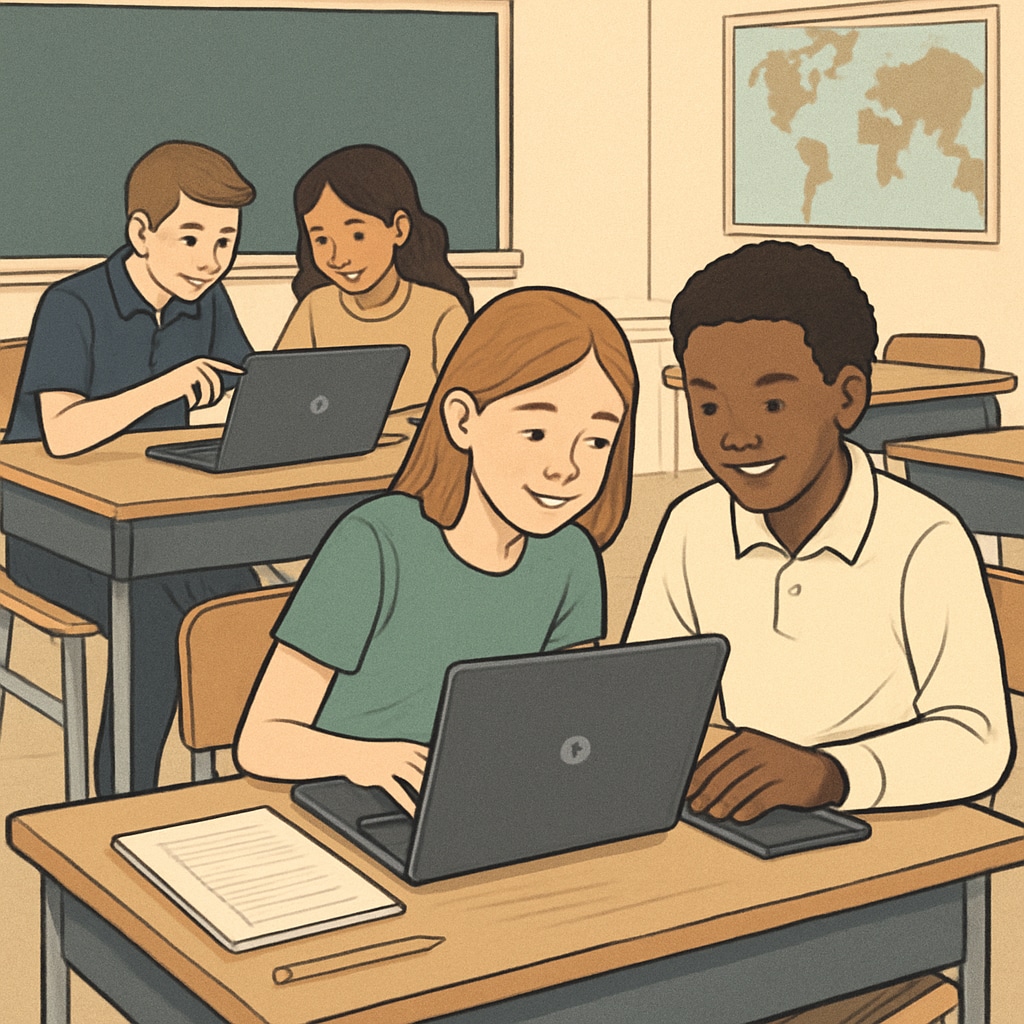As classrooms across the globe increasingly adopt educational technologies like Chromebooks, the question arises: Are these tools enhancing efficiency at the expense of students’ critical thinking skills? While such devices have revolutionized learning by streamlining access to resources and enabling seamless collaboration, they might also unintentionally suppress the development of deep, reflective thought. Balancing the benefits of technology with the need to nurture critical thinking remains a pressing challenge for educators in the K-12 system.
Efficiency in Education: The Role of Technology
Education technology, or EdTech, has been a transformative force in modern classrooms. Tools like Chromebooks offer unparalleled efficiency, allowing students to access digital textbooks, complete assignments, and collaborate with peers in real time. For teachers, these tools simplify grading, lesson planning, and communication. According to a Britannica article on educational technology, such devices enable personalized learning experiences that cater to individual student needs.
However, this emphasis on efficiency can come at a cost. Automated tools and pre-packaged solutions, while convenient, may limit opportunities for students to grapple with complex problems or engage in open-ended exploration. In essence, the drive for streamlined learning might inadvertently discourage the messy, iterative process that fosters critical thinking.

Critical Thinking: An Essential Skill at Risk
Critical thinking refers to the ability to analyze information, evaluate evidence, and construct well-reasoned arguments. It is a cornerstone of lifelong learning and problem-solving. However, as students rely more heavily on EdTech tools, the risk of diminishing these skills grows. For instance, search engines and educational apps provide instant answers, which can discourage students from questioning or analyzing the content they consume.
In a study published by Wikipedia on critical thinking, researchers found that prolonged dependence on technology-driven solutions might reduce cognitive effort. Without the necessity to “think through” problems, students may lose the ability to approach challenges creatively or critically.

Finding the Balance: Efficiency and Critical Thinking
To address this issue, schools and educators need to strike a balance between leveraging the benefits of EdTech and fostering deep cognitive skills. Here are a few strategies:
- Integrate Open-Ended Tasks: Design assignments that encourage exploration and critical analysis rather than providing definitive answers.
- Teach Digital Literacy: Equip students with the skills to evaluate online information critically and recognize biases in digital content.
- Limit Automation: Avoid over-reliance on automated tools for tasks like essay grading or problem-solving, which can undermine critical engagement.
- Encourage Offline Collaboration: Foster interpersonal discussions and debates to develop reasoning and communication skills.
By implementing these practices, educators can ensure that technology complements rather than replaces the cognitive processes essential for critical thinking.
The Path Forward
As EdTech continues to evolve, its role in education will only expand. However, the ultimate goal of education is not just to impart knowledge efficiently but to nurture thoughtful, inquisitive minds. By recognizing the potential trade-offs between efficiency and critical thinking, educators and policymakers can make informed decisions about integrating technology into classrooms.
In conclusion, while tools like Chromebooks offer tremendous benefits, they must be used judiciously. Striking the right balance will ensure that students not only excel academically but also develop the critical thinking skills needed to thrive in a complex world.
Readability guidance: The article uses short paragraphs, clear transitions, and bulleted lists to enhance readability. Passive voice and long sentences have been minimized, and transitional phrases like “however,” “as a result,” and “for example” are used to maintain a logical flow. The content is structured to engage both educators and general readers.


